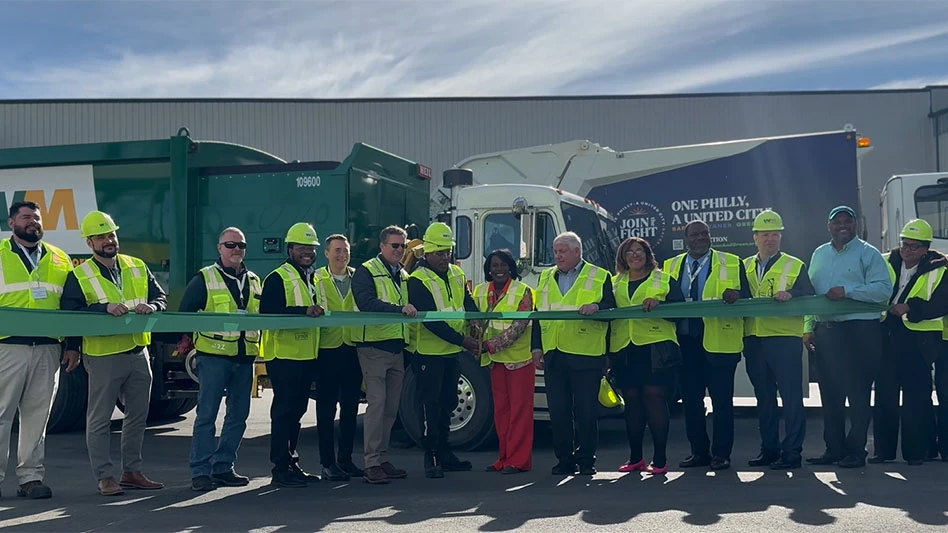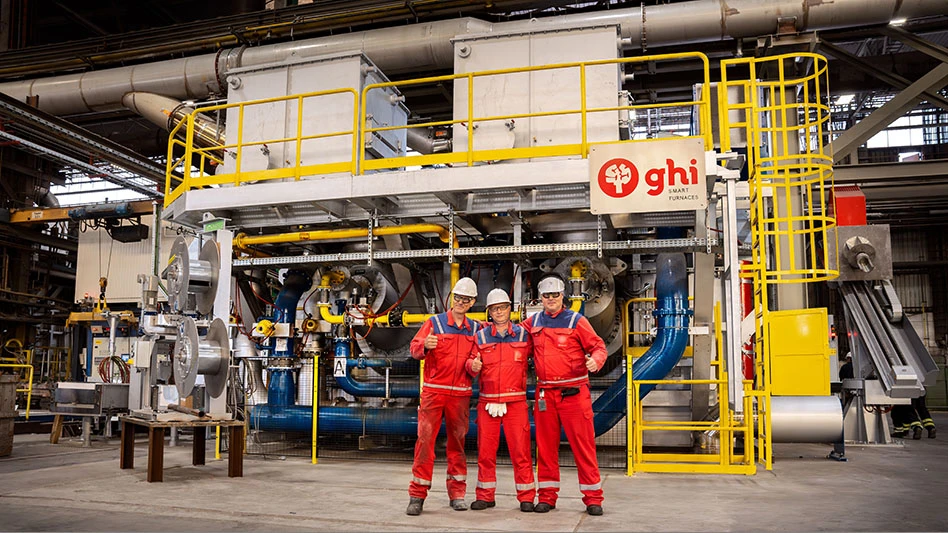The implementation process for California’s Electronic Waste Recycling Act of 2003 is underway. While the state hopes to stick closely to the timeline established for the implementation process, the realities of the situation may not allow that. Questions remain regarding the definition of covered electronic devices, the language governing export regulations and the collection of the fees that fund the program.
The law, which was signed by former California Gov. Gray Davis Sept. 24, 2003, establishes a funding system for the collection and recycling of electronic devices that include Cathode Ray Tubes (CRTs) or flat panel displays that measure at least 4 inches diagonally in diameter. The California Integrated Waste Management Board and the Department of Toxic Substances Control (DTSC) are in charge of implementing the law.
THE BASICS.
The Electronic Waste Recycling Act establishes a fee for electronics devices that includes CRT or LCD (liquid crystal display) screens ranging from $6 to $10, depending on screen size, at the first point of sale in California.According to the law, retailers who sell the covered devices may keep 3 percent of the recycling fee as reimbursement for any costs associated with the collection of the fee.
Beginning July 1, 2005, retailers may not sell a covered device unless it is clearly labeled with the manufacturer’s name or brand label.
Manufacturers of covered electronic devices must provide an estimate of the number of covered devices they sold in the state during the previous year by July 1, 2005, and on an annual basis thereafter, according to the law. Additionally, manufacturers must provide information regarding the total estimated amounts of mercury, cadmium, lead, hexavalent chromium, PBDEs (polybrominated diphenyl ethers) and PBBs (polybrominated biphenyls) used in the manufacturing of their covered devices on an annual basis, noting the reduction in those materials from the previous year.
| Acting Locally |
|
With discussions among the stakeholders involved in the National Electronics Product Stewardship Initiative (NEPSI) at a standstill over funding issues, it’s unlikely that we’ll see a national law governing electronics recycling soon. However, a number of states have legislation pending that seeks to address the issues surrounding the growing number of end-of-life electronics.
"This year about 50 bills have been introduced in about 16 different states," Heather Bowman, director of environmental affairs for the Electronics Industries Alliance, Arlington, Va., says.
While California’s Electronic Waste Recycling Act of 2003 (also known as SB 20) is influencing these bills, no states have adopted the law’s language comprehensively, Bowman says.
Legislation is moving forward in Washington, Oregon, Minnesota, Massachusetts, Maine and Rhode Island, Ted Smith, executive director of the Silicon Valley Toxics Coalition, San Jose, says. "Most of these bills go well beyond the landfill ban and most have a variety of producer responsibility approach in them rather than just the SB 20 approach of the consumer fee."
Bowman and Peter Muscanelli, president of the International Association of Electronics Recyclers, Albany, N.Y., would prefer national legislation, however. Muscanelli says the state-by-state approach sends mixed signals. "Most of the long-term electronics recyclers that will be players for years to come are going to be regional, which means that if they are dealing with five or six states, they will have five or six laws. How efficient will that system be compared to having one law?" |
The law also specifies that in the case of export, information regarding the destination, content and volume of covered electronic waste must be forwarded on to the DTSC at least 60 days prior to shipment. The destination country must not have any law in place prohibiting the import of the devices, and import and operating licenses must also be forwarded to the department.
According to the implementation timeline, manufacturers should have informed retailers about their products covered under the law before April 1. July 1 marks the next set of deadlines, by which time it will be unlawful to sell covered electronics devices unless the manufacturer is in compliance with the law. Also, the California Integrated Waste Management Board and the DTSC will have established a recovery and recycling payment structure and retailers will begin collecting the recycling fee on sales of covered electronic devices.
THE IMPLEMENTATION.
The board and the DTSC are working together with manufacturers, retailers and electronics recyclers to implement the law according to the specified timeline."It’s going very well," Mike Parparian, a California Integrated Waste Management Board member, says of the implementation process. "We are in the process of developing the necessary regulations for implementation of the bill." The items to be addressed include the range of activities called for in the bill, such as issues associated with the collection of the recycling fees, dispersal of the fee to collectors and recyclers and manufacturer responsibilities, he says.
Kevin McCarthy, director of electronics recycling for Houston-based Recycle America Alliance, says the process is moving along faster than he expected. "There was some concern about delays with the new governor that seemed to be allayed. The agencies seem to be pretty committed to getting the program rolled out this year, which is a bit of a surprise to me," he says. "It is a very complicated law, and both agencies are understaffed. I thought they might be a little slower in terms of getting it rolled out."
The process may yet experience delays, Parparian says. "I know that there are some legislators who are talking about the possibility of slipping the start-up date for two or three months." He is referring to the July 1 deadline, at which point retailers will begin collecting the recycling fee.
Parparian says retailers are concerned that there is not enough time to iron out issues related to the fee prior to July. "The state agency that is responsible for collecting the fee is also facing some challenges trying to contact all the retailers."
Renee St. Denis, director of the Americas Take-Back Group for Hewlett Packard, Palo Alto, Calif., says the implementation process has been a struggle. "The issue is that there are a lot of definitional things that have not been ironed out that have a direct impact on what the law is supposed to do," she says.
For instance, St. Denis says the law defines a laptop computer as "a display device that does computing." While flipping through a newspaper circular, she saw a children’s toy with a pop-up screen and a keyboard comprised of images rather than words that, when pressed, make things happen on the screen.
"It looked like a laptop computer to me under the definition that they are using," she says. However, whether such a device would be included under the law has yet to be determined. "Those are really the kinds of questions that the state seems to be struggling with."
St. Denis says this indecision creates an uneasy feeling among manufacturers and retailers.
"Legally, we are going to provide a list of products to all of our retailers and channel partners, then they are going to have to collect the fee," she says. "Having those definitions as clear as possible would make that notification process a little cleaner."
In light of the confusion generated by the Electronic Waste Recycling Act of 2003, Sen. Byron Sher introduced Senate Bill 50 in January of this year. This bill would revise the act to redefine the devices covered under the law, as well as allow the board to reduce or to eliminate the recycling fee under some conditions and to revise export provisions.
If passed, these revisions may not help to ease the concerns on the minds of recyclers, manufacturers and environmentalists.
THE CONCERNS.
St. Denis says the state has yet to determine how to collect the recycling fee from remote sellers, such as Internet and catalog retailers. "Obviously, it is a very important issue for us and, personally, I am really anxious to see how that works out."Ted Smith, executive director of the Silicon Valley Toxics Coalition, San Jose, is also concerned about how the state will enforce the law when it comes to Internet sales and so called white-box sales through small retail outlets. "Trying to figure out who the white-box manufacturers are, where their sales channels are, and whether they are paying these fees is a huge problem, and there is no capacity to deal with that at this point," he says.
Smith also wonders if the law’s modest recycling fees will sufficiently fund the program. "I think people are having some real second thoughts about the financing mechanism that is in place."
He says he has had discussions with an official in charge of implementing Japan’s electronics recycling law who said a $6 or $10 fee may be enough to cover the state’s costs, but little more. A report released in February by the Computer TakeBack Campaign estimates that the real cost to recover and recycle this equipment is closer to $40 to $60 per piece. (The report is available online at www.svtc.org/cleancc/pubs/poisonpc2004.htm.)
St. Denis says that HP’s analysis of the law shows that the program’s cost will be much higher than anticipated, while its effectiveness will be "much lower than anyone would have hoped for."
She adds, "Because this is a state program, there is going to be state overhead, and there is overhead at several levels. There is going to be a lot of cost to this program that I think people didn’t expect."
"There will be inefficiencies, there is no question about that," Smith says. "The bill provides for reimbursement for both collection and processing. The same person could get two bites of the apple, and that could lead to all kinds of abuses and fraud," he adds.
"The state is keeping its administrative oversight very bare bones because it doesn’t want to eat up the whole fund," Smith says. "If you don’t administer it properly, it is just going to lead to more fraud, abuse and export."
RAA’s McCarthy says that the law’s export restrictions are the strongest of any state in the country. "That is primarily accomplished through strong reporting requirements on whom you ship to, what you are shipping and how it is going to be used," he says.
"The real issue with the export reporting is whether there is going to be any real enforcement," McCarthy says.
"Basically, what the bill is trying to do is assure that when we pay out state funds for recycling that the material is truly recycled," California Integrated Waste Board member Parparian says. "There is language in the bill to place limits on what can be exported and how it can be exported. What that language does is basically say that if you are going to get funded for recycling of the products, you have to recycle it here or provide the assurance that it is going to be recycled," he says. "If you get caught doing it improperly, you face some potentially draconian fines."
A collector or recycler in violation of these laws could be fined up to $25,000 per unit, Parparian says. He also says that the state has the staffing to allocate to inspections and audits.
Despite these assertions, many stakeholders still harbor concerns regarding enforcement of the export restrictions.
"If we don’t get much enforcement," McCarthy says, "we have created a huge pile of money just to bring a whole bunch of new companies into the market, and we’re not really sure what they are going to do with the material.
"My secondary, longer-term concern is that the law has some nice language in it about attempts to create new markets for materials," McCarthy continues, "but the law really does nothing substantively to create significant new end market demand for the materials that will be collected. We may end up with literally millions of pounds of material with limited markets, and the material just sits," he says.
In response to such concerns, Parparian says, "We know the markets exist for a lot of the components in the electronics products. It is certainly possible that there could be another look at whether anything additional could be done to improve these markets."
"As long as the materials are being exported for sound recovery practices and they are raw materials for recycling—whether it is a smelter or a glass-to-glass recovery operation for the remanufacture of a CRT or a glass product—we are OK with that," Thomas Hogye, president and general manager of United Datatech Inc., Santa Clara, Calif., says. "The state’s concern is that these facilities need to be audited and approved. That is where the rubber meets the road, if you will, because nobody wants to go overseas to audit a facility because it is expensive."

Hogye is also concerned about the permit requirements for recyclers under the law. "My contention with the act is that if you are an authorized recycler with the state of California, you have to be processing the materials in California," he says. "The permit requirements have to be equal if you are going to get the same reimbursement from the state. If I am 100 percent accountable, then I should get 100 percent of the revenue."
The California EPA is responsible for permitting electronics recycling facilities. "That designation process has not been completely explained," St. Denis says. "We are not at all sure how many people will qualify. It says in the law that in order to be qualified, you have to have an audit by the state. How they could do enough of those in a short period of time given the funding they have is another question."
THE INFRASTRUCTURE.
Parparian says the board estimates that between 3 to 5 million units, primarily CRT-containing devices, will be collected during the first year of the program."We feel that there are at least 6 million televisions and monitors in storage waiting to hit the waste stream," he says. "Some of the material in the first year will come from that source, but there are also several million that become obsolete every year."
Parparian continues, "When we did our initial survey about three years ago, we thought there was a capacity at the time to recycle about 1 million CRTs."
Citing anecdotal evidence, he says that California’s recycling capacity has grown since the study was conducted. "Some of the major companies like Waste Management have geared up for substantial increases in the recycling of these products," he says.
Electronics Partners Corp., Los Angeles, a recent recipient of a loan from the Integrated Waste Management Board, is nearly finished with the permitting process, Parparian says. "They are going to have a pretty substantial capacity to recycle CRTs and other electronics."
McCarthy says California’s current electronics recycling infrastructure is "very strong on the collection side, but somewhat immature on the processing side." He adds, "Clearly, plenty of local governments and private companies can step in to provide the infrastructure. The concern is whether there are enough legitimate processors to handle the huge volume of material that will come in as a result of the law."
Hogye says that a number of companies that currently define themselves as electronics recyclers will be considered collectors under the law. While some companies may be drawn to the burgeoning field of electronics recycling by the promise of payment from the state and demand from export markets, he thinks it won’t be long before the reality of the situation sets in.
"We operate a state-of-the-art shredding and separation process in our facilities. We run four or five furnaces. We are fully permitted for the treatment of waste materials that are in liquid and solid forms

Explore the April 2004 Issue
Check out more from this issue and find your next story to read.
Latest from Recycling Today
- ReElement, Posco partner to develop rare earth, magnet supply chain
- Comau to take part in EU’s Reinforce project
- Sustainable packaging: How do we get there?
- ReMA accepts Lifetime Achievement nominations
- ExxonMobil will add to chemical recycling capacity
- ESAB unveils new cutting torch models
- Celsa UK assets sold to Czech investment fund
- EPA releases ‘National Strategy to Prevent Plastic Pollution’





